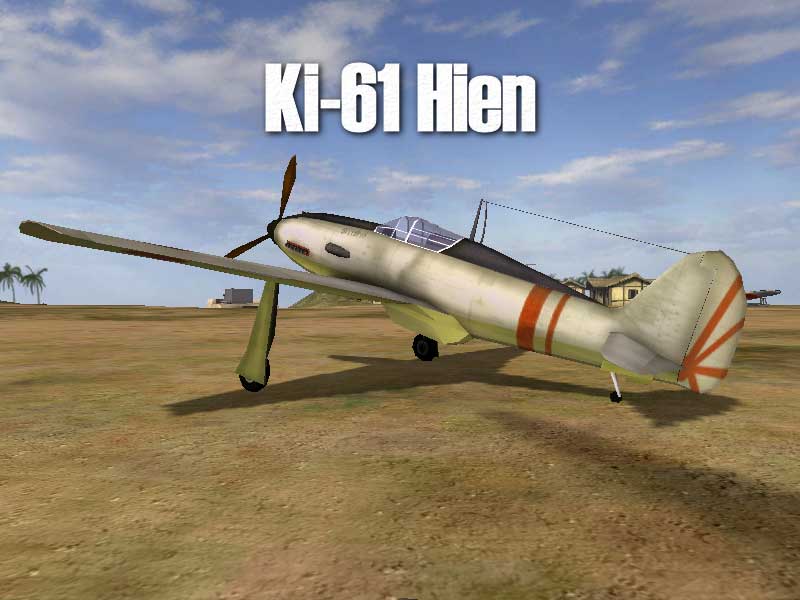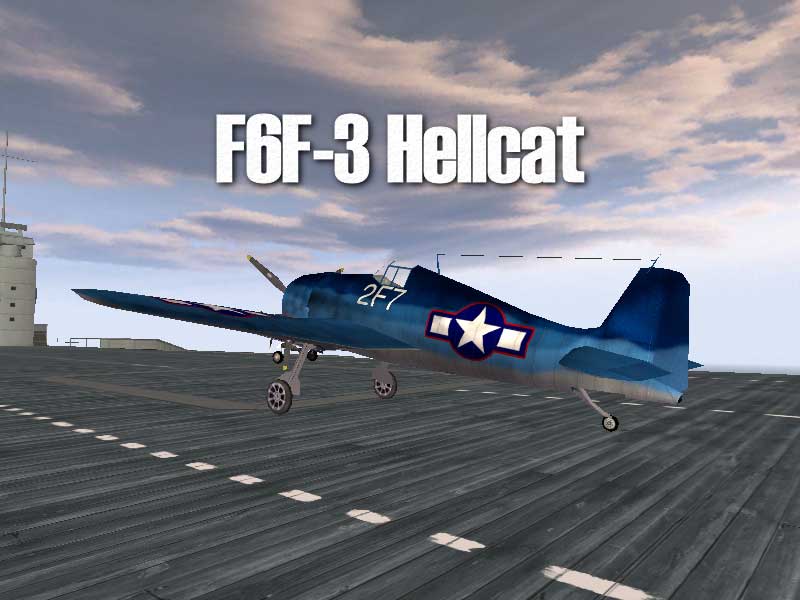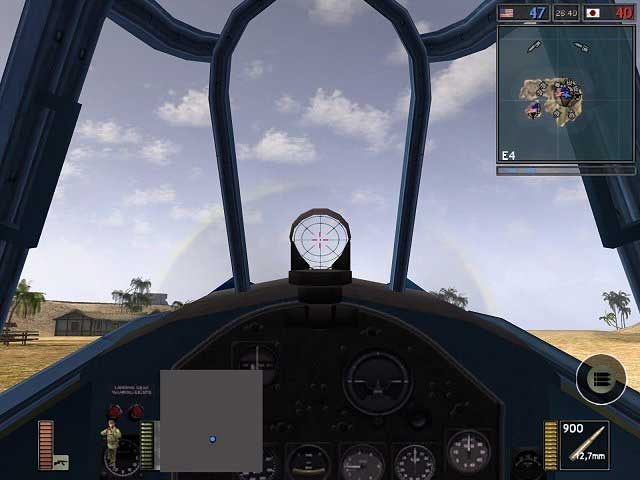After several weeks being quiet it is now time for a news update. Some of you may have already heard about that a new full version of BG42 is upcoming. This is called 1.35 and will contain not only a pile of debugged maps and code, but some new vehicles as well.
Yes, we dropped the current internal 1.34b build and made a complete new full install mod version, in order to avoid further confusion with the different patches and to get rid of potencially problematic code from our unlucky 1.3 build. Battlegroup42 v1.35 will be much more stable and eliminates a lot of the trouble we had with 1.3x. Especially we've greatly improved dedicated server performance by reducing network traffic to improve on-line connections and reduce latency (lag). While v1.35 will enter the testing stage in a few days, we want to show up what will be new there. This update is about the new planes!
First of all is the Kawasaki Ki-61 Hien. The Hien (Allied code name "Tony") was a landbased, single-seated fighter plane which first flew in December 1941. The construction was highly influenced by the German Heinkel He100 and He112 fighter planes. In difference to other japanese planes with air-cooled radial engines, which where optimized for maneuverability, the Ki-61 used a liquid-cooled in-line engine and its aerodynamic hull was designed for speed and power. Through its lifetime the Ki-61 suffers from cooling problems, which led to the development of the Ki-100, basically a Ki-61 with a more powerful air-cooled radial engine from Mitsubishi. The resulting plane was probably the best japanese fighter of the war.
The Ki-61 mounted a mix of 12,7mm and 20mm machine guns (sometimes even 30mm guns) and saw first combat in spring 1943 in the New Guinea/New Britain area. It proved initially very successful against almost all allied fighters in the pacific, except the P-38 Lightning. It could also carry two 250 kg bombs on underwing mounts and served as a fighter bomber. Tides change with the upcoming of new powerful allied planes like the Mustang, the Hellcat and the Corsair, which finally outclassed the Hien.


Specifications:
- Wingspan: 39 feet 4 inches
- Length: 29 feet 3 inches
- Height: 12 feet 2 inches
- Empty weight: 5,800 pounds
- Loaded weight: 7,650 pounds
- Engine: Kawasaki Ha-40 in-line (876 kw / 1191 hp)
- Maximum speed: 366 mp/h
- Service ceiling: 32,810 feet
- Range: 1120 miles
Variants:
- Ki-61-Ia: two 12.7 mm MG in the nose, one 7.7 millimeter gun in each wing
- Ki-61-Ib: two 12,7mm MG in the nose, one 12,7mm MG in each wing, from August 1943 the wing guns were replaced by german MG151 20mm guns
- Ki-61-I KAIc: Improved version, entered production in January 1944, two 20mm Ho-5 cannons in the fuselage, one 12,7mm MG in each wing, underwing pylons for 250kg bombs
- Ki-61-I KAId: bomber interceptor, built in late 1944: two 12.7 mm MG in the nose and one 30 mm Ho-105 cannon in each wing
- Ki-61-II: Improved version with greater wings, new canopy, more powerful Kawasaki Ha-140 engine with 1120 kw / 1500hp, two variants:
- Ki-61-II KAIa: one 12.7 mm in each wing, two 20 mm cannons in the nose
- Ki-61-II KAIb", one 20 mm cannon in each wing, two 20 mm cannons in the nose
The Hien was a nearly forgotten leftover from the Lost Battallion mod, which donated its content to BG42 after stopping further development. It will replace the Zero fighters on all pacific maps with landbased airfields, except the very early battles like Guadalcanal, Bloody Ridge, Philippines and Kokoda.
The next new plane was the most successful naval fighter designs of World War II. Yes, it is the Grumman F6F Hellcat, which first appeared on the battlefields in January 1943, when Navy Squadron VF-9 onboard the USS Essex got the new plane. Though the Hellcat was neither the fastest nor the most maneuverable or even the most heavily armed plane in the Pacific area, it shows an impressive all-around capability. It has been said that the F6F did nothing extraordinarily, but it did do everything well - which is pure understatement: Pilots flying the F6F achieved 4,947 of the 6,477 air victories claimed by the U.S. in the Pacific! A total of about 5200 enemy planes were destroyed by Hellcats during WWII, at a cost of 270 own losses.
The Hellcat was designed as a successor of the F4F Wildcat, which poorly performed against the Japanese A6M Zero fighters. It could fly even when seriously damaged and has good armor protection for the pilots. Standard armament on the F6F consisted of six .50 caliber (12.7 mm) Browning machine guns with 400 rounds each; later aircraft gained three hardpoints to carry a total load in excess of 2,000 lb. (907 kg) bombs. It can also be fitted with a Mk.13-3 torpedo under the centerline. The appearance of the Hellcat immediatly ended the Zero´s domination of the Pacific skies. The British also used the Hellcat in Far East as well as in the European theater with great success, especially off Norway and in the Mediterranean. 12,275 Hellcats were build until the production ended in November 1945.


Specifications:
- Wingspan: 42 ft 10 in
- Length: 33 ft 7 in
- Height: 13 ft 1 in
- Empty weight: 9,238 lb
- Loaded weight: 12,598 lb
- Engine: Pratt & Whitney R-2800-10W "Double Wasp" two-row radial engine (1,500 kw, 2,000 hp)
- Maximum speed: 380 mph
- Service ceiling: 37,300 ft
- Range: 1530 miles max., 945 in combat
Variants:
- F6F-3: first production model, six 12.7 mm machine guns, 907 kg bombs
- F6F-5: more powerful R-2800-10w engine with 2200hp, can be fitted with 6× 5 in (127 mm) HVARs or 2× 11¾ in (298 mm) Tiny Tim unguided rockets underwing, bombload increased to a total of 4000lb
-F6F-5N: Nightfighter with radar, 2× 20 mm cannon, 225 rounds/gun and 4× 12.7 mm machine guns 400 rounds/gun
- F6F-6: Pratt and Whitney R-2800-18W two-stage blower radial engine, 2100hp, four blade propeller, max. speed increased to 417 mph, did not enter mass production.
The Hellcat was made by Jammer and will replace the Vought Corsair in Battlegroup42 on several Pacific maps, e.g. on Anguar, Surigau and Raid on Rabaul.
That's all for now, folks. More information will follow soon. So stay tuned! As always, we are looking for people that would like to join our mod team. Especially we are looking for skinners/unwrappers.


